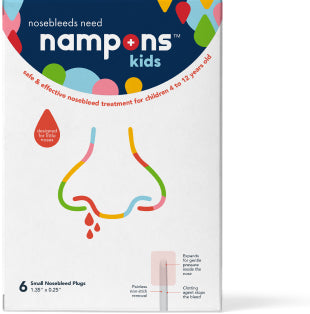Do you have a fever and a nosebleed? These two symptoms could be indicative of a mild or serious infection; it could be related to medications, or it could be the result of two unrelated issues.
Whether you're worried about these symptoms in yourself or your child, the following guide will help you to put the pieces together and understand what the issue might be.
Cold or Sinus Infection
Bacterial and viral infections can cause nosebleeds by irritating the delicate membranes within the nose. The tiny blood vessels that cover the nasal septum can break and bleed with ease, and if you're constantly sneezing, rubbing, and blowing your nose, you'll be more prone.
Hay fever, flu, and even Scarlet fever also fall into this bracket. If you have a runny nose, and you can't leave it alone (understandable) then you're at risk of developing nosebleeds, although some people are more susceptible than others.
Some of these viruses and bacterial infections also cause fever, so it's possible to have both a high temperature and a bloody nose if you have an infection.
Drug Interactions
Drug side effects can mimic a number of health conditions and leave you with stomach pain, joint pain, headaches, changes in heart rhythm, and even a skin rash. In extreme cases, they may cause fever, and while they won't trigger nosebleeds, they could make the bleeding heavier.
Unrelated
Your fever and nosebleed may be unrelated. The most common cause of nosebleeds is nose picking while fever can be caused by everything from over-exposure to sun and heat stroke to medication side effects and infection.
If you're picking your nose while you have a fever, it may bleed. The risk is more pronounced if you're worried about the fever and tend to pick or rub your nose when you're anxious.
Viral Hemorrhagic Fevers
Before we discuss the terrifying symptoms and implications of hemorrhagic fevers, it should be noted that they are rare and nosebleeds are not the only symptom or the worst one. Furthermore, if you haven't spent any time in Africa or South America, you probably don't have anything to worry about.
Viral hemorrhagic fevers (VHFs) are caused by several different types of virus, including Lassa Fever, Ebola, and Yellow Fever. They damage the blood vessels and organs and can cause heavy nosebleeds and fever.
There is no cure for these illnesses and the prognosis isn't great, but they are survivable and can be treated and managed. If you have a fever and a nosebleed and you have recently been to tropical countries, you should see a doctor.
When to See a Doctor (for Children and Adults)
Nosebleeds are common, and while there isn't always a direct and obvious cause, there is still a cause. For instance, many cases of "unexplained nosebleeds" are the result of nasal dryness or habitual picking.
Generally speaking, you don't need to seek emergency help for a nosebleed, but that changes if the bleeding is heavy, the nosebleeds are frequent, or you have existing health conditions that could cause complications, including a clotting or bleeding disorder. You should also seek medical attention if you recently suffered from a head injury, are bleeding a lot, or experience other symptoms such as a severe headache, chest pain, or dizziness.
If your child is the one with the nosebleed and they are under the age of 1, you should also seek medical advice. They tend to be too young to rub or pick their nose and frequent nosebleeds may be indicative of a more serious issue.
Where a high temperature is concerned, you should seek help if any of the following is true:
- You are an adult with a temperature greater than 103
- A child under 3 months has a high temperature
- A child aged 3 to 6 months has an elevated temperature and is displaying other symptoms
- A child aged over 3 months has a temperature of 102 or higher
- The high temperature is accompanied by seizures
- The fever doesn't drop after taking OTC medications
Most fevers can be managed with OTC meds like acetaminophen, as well as plenty of fluids and bed rest. This is true for children and adults. However, it's important to remain vigilant, keep checking the temperature, and seek help if it goes too high.



